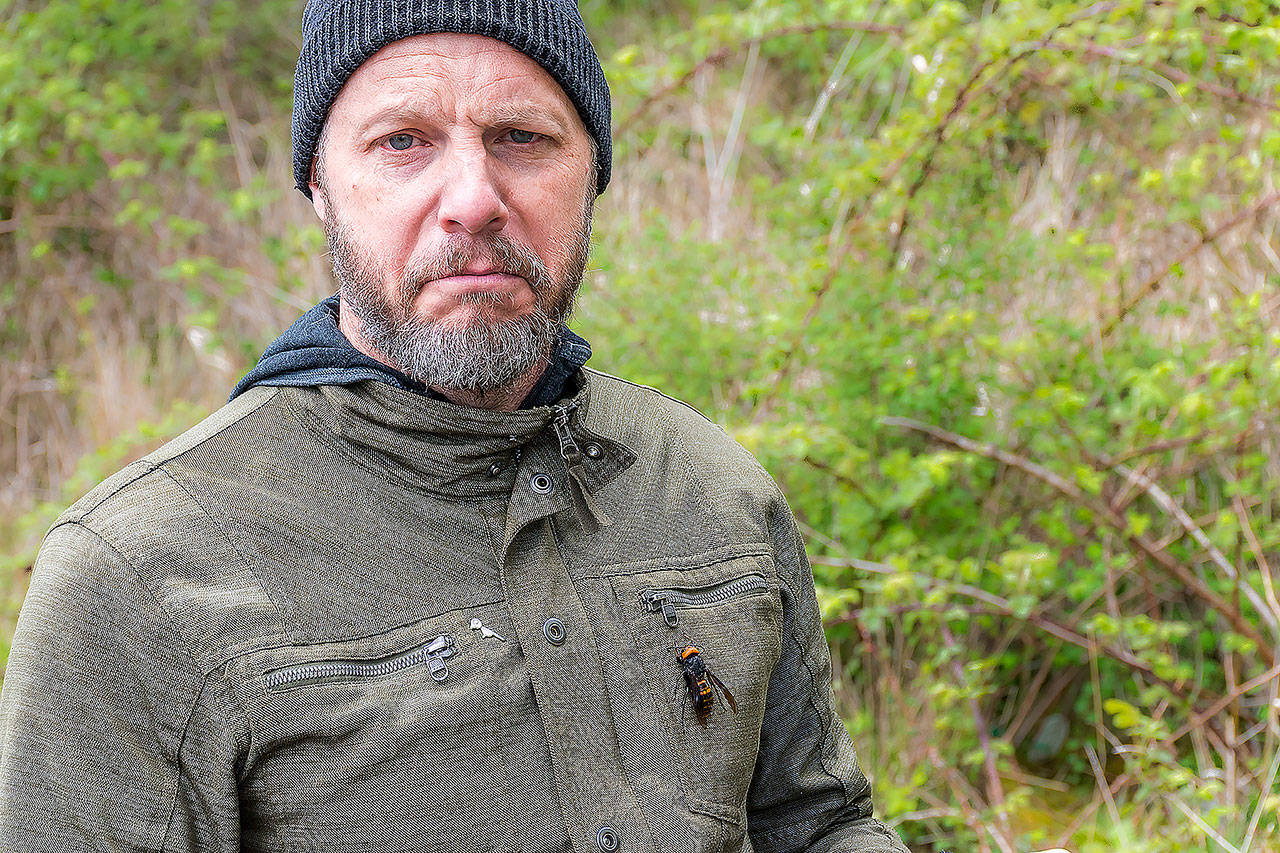By Thomas Clouse / The Spokesman-Review
It looks like a pest someone would invent for a horror movie. And, it’s got a sting to match.
The Washington Department of Agriculture is actively seeking volunteers in northwest Washington to help trap the Asian giant hornet after two sightings were confirmed in December in Blaine, located in Whatcom County. A nest also was confirmed to have been found in Nanaimo, B.C., on Vancouver Island.
“It’s only been confirmed in those two sightings in Blaine” which is in Washington’s extreme northwest corner, said Karla Salp, a public engagement specialist for the state Department of Agriculture. “For most of the state, we want people to learn what the Asian giant hornet looks like. And if they do think they have seen it, get a photo or collect a dead specimen and report it on our online reporting system.”
But she reiterated Washingtonians should not be going out on giant hornet-hunting sprees.
“We are asking people not to kill things if they aren’t sure what it is,” Salp said. “People are killing bumble bees thinking they are Asian giant hornets. We need bumble bees.”
While the Asian giant hornets aren’t believed to have spread very far in the Northwest, news of the discovery has recently exploded. Salp has spoken to the New York Times, Associated Press, CNN, Reuters, major television networks and some foreign media outlets over the past couple of days.
“It has been crazy,” she said. “I don’t know why. It’s been in the media off and on since last December.”
Salp believes an interview in Japan is where someone first coined the name “murder hornet.”
“That’s not what it is called. It’s the Asian giant hornet,” she said. “I think the whole ‘murder hornet’ moniker is unhelpful.”
With the extra attention have come dozens of unconfirmed sightings, she said.
“We’ve had hundreds since this weekend,” Salp said. “We are receiving reports from all over the country, which isn’t helpful.”
Washington is already home to a host of buzzing, flying things that can deliver a nasty sting.
Paper wasps, which have a distinctive hour-glass shape, make visible nests under roof eaves. Bald-faced hornets are the largest native hornet, and they build football-shaped nests that hang from trees. They can grow to about an inch long.
The most notorious of the stingers are yellow jackets, which are first-cousins to the bald-faced hornets. Yellow jackets, which typically grow to less than an inch long, nest underground. All three species can become very aggressive if agitated or something threatens their nests.
Asian giant hornets, which nest underground, don’t really look like any of the native species, according to the state’s website.
Asian giant hornets can grow up to 2 inches long, which is twice as large as native bald-faced hornets, and Asian giants have orange heads, a black thorax — or middle section — and black and orange stripes on their abdomens.
They tend to do well in warmer, forested climates like Western Washington, Salp said.
“They eat insects and carbohydrates. When queens come out in the spring, they are looking for oak sap, which is their favorite carbohydrate,” Salp said. “Western Washington is ideal habitat. What we don’t know is whether they would do well in Eastern Washington.”
Once the queen starts a nest, the Asian giant hornets mainly feed on insects. One of their favorite prey is the common honey bee. The hornets can attack a hive and literally bite the heads off hundreds of the honey bees as the bees rush out of the hive to defend it.
“The biggest threat is when they go into a slaughter. They are proactively trying to kill (the bees). They are looking for the larva inside the hive,” Salp said. “They take the larva back to the Asian giant hornet hive to feed their own young.
“It only takes a handful of hornets to kill an entire (bee) hive in a couple of hours,” she continued. “We do have a couple of reports of beekeepers who had hives that sustained damage consistent with Asian giant hornet attacks.”
In an effort to try to figure out how the Asian giant hornets got to Washington, the state sent hornets found in Blaine and Nanaimo to have DNA testing in Japan.
“What I can say is that those are two different introductions because they have different genetics,” Salp said.
One of the hornets appears to have originated in Japan, while the other appears to have originated in South Korea, she said.
In the meantime, the state is seeking volunteers to build specifically designed traps using plastic bottles with orange juice and rice cooking wine as bait.
“This is a trap used in Japan during the main season to trap Asian giant hornets. It’s important for us to have consistency by what is put in the traps,” Salp said. “We don’t want to catch honey bees. The alcohol (in rice cooking wine) dissuades honey bees.”
The state is currently seeking out residents of Whatcom, Skagit, San Juan, Island and Clallam counties to volunteer to use the homemade traps. She noted virtually all commercially built hornet traps will not work because the holes are too small to catch Asian giant hornets.
“We definitely want to hear if anyone sees them,” Salp said.
Talk to us
> Give us your news tips.
> Send us a letter to the editor.
> More Herald contact information.

























